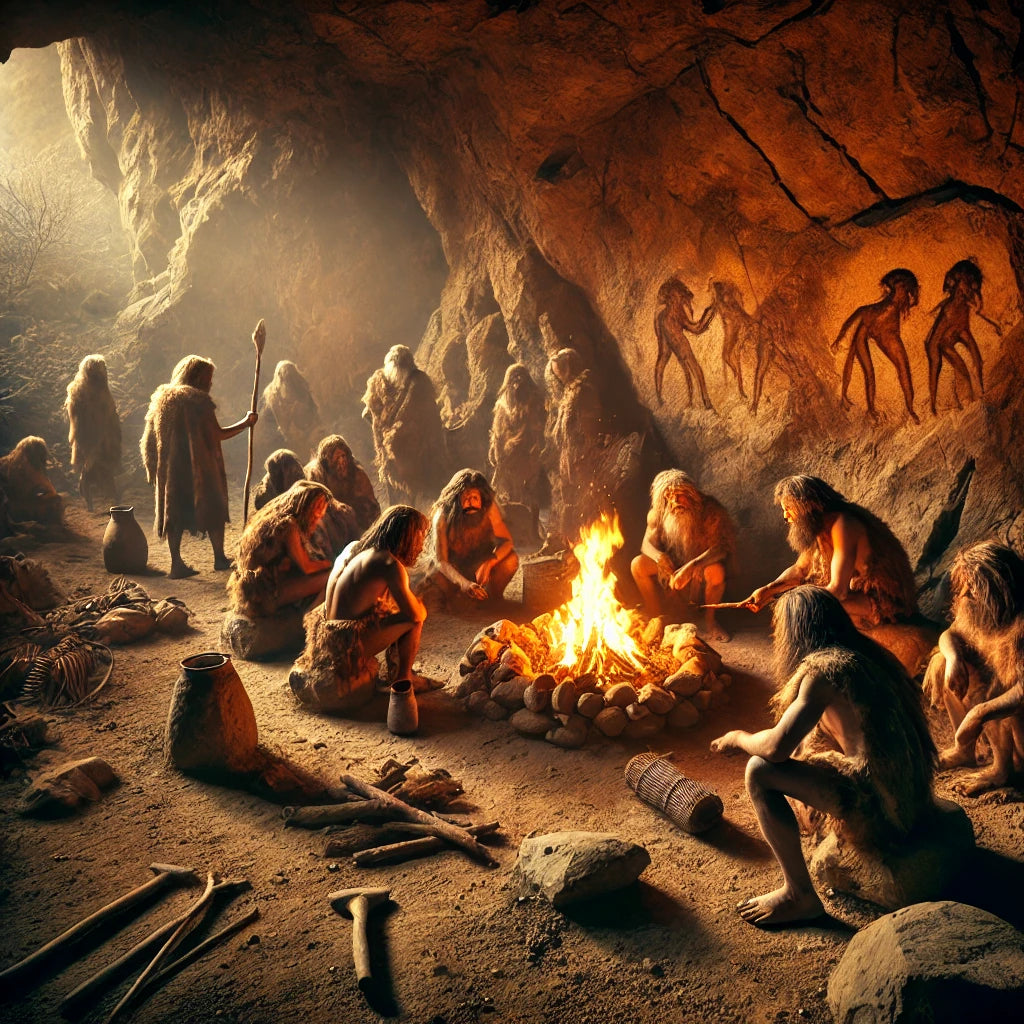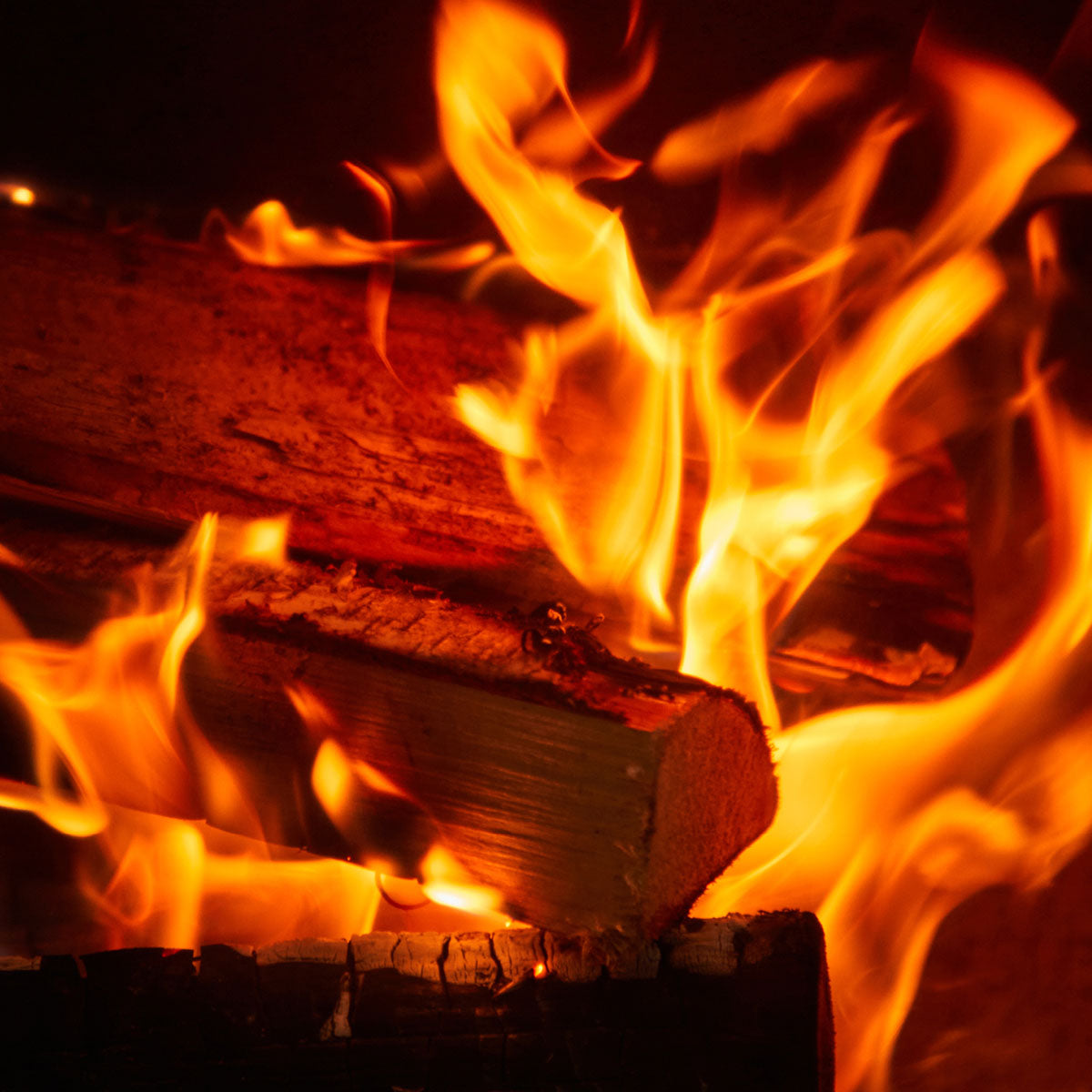Humankind’s Relationship with Fire: From Survival to Sophistication
·

·
Fire has been humanity’s steadfast companion, evolving from a survival tool to a source of comfort and culture. This relationship, spanning hundreds of thousands of years, reflects our ability to adapt and innovate, both biologically and culturally. From the discovery of fire by early hominins to the modern-day wood-burning stove, fire’s transformative power has been central to the human story.
The Discovery of Fire: Survival and Mastery
The earliest evidence of fire use by humans dates back around 1.5 million years. Early hominins likely stumbled upon naturally occurring fires ignited by lightning and gradually learned to harness them for warmth, protection, and cooking. Mastery of fire marked a critical juncture in human evolution, enabling survival in colder climates, expanding dietary possibilities, and fostering social bonds around campfires.
Cooking, in particular, was revolutionary. Heat broke down tough fibers in meat and plants, making food more digestible and unlocking additional nutrients. This shift may have supported the development of larger brains in early humans, requiring less energy for digestion and more for cognition.
The Smoke Factor: Tolerating and Utilizing Wood Smoke
While fire offered immense benefits, it also came with risks, particularly from wood smoke. Early humans were regularly exposed to smoke in enclosed spaces, such as caves or primitive shelters. Smoke contains particulates and chemicals, including carbon monoxide and polycyclic aromatic hydrocarbons.
Over generations, humans evolved genetic adaptations to tolerate low levels of smoke. A notable example is the development of enzymes like cytochrome P450, which helps detoxify harmful substances in smoke. This adaptation is more prevalent in populations with long histories of wood fire use, suggesting an evolutionary response to the ubiquity of smoke in human environments.
Fire in Culture and Technology
Beyond survival, fire shaped human culture and technology. Its warmth and light extended productive hours beyond sunset, while its presence became central to rituals and storytelling. Controlled use of fire facilitated the first metallurgical processes, such as smelting copper and later iron, setting the stage for technological advancements that defined civilizations.
In parallel, the ways humans managed fire became more sophisticated. Open hearths in homes evolved into enclosed fireplaces, improving heat distribution and reducing smoke exposure indoors. This innovation also sparked architectural changes, such as the addition of chimneys.
Wood-Burning Stoves: Efficiency Meets Comfort
The development of wood-burning stoves in the 16th and 17th centuries marked another leap in fire’s role in human life. These stoves provided a more efficient and safer means of heating and cooking compared to open hearths. By enclosing the fire, stoves reduced smoke leakage, conserved fuel, and allowed better control of temperature.
The Industrial Revolution further refined wood-burning stoves, incorporating cast iron and other durable materials that improved efficiency and longevity. By the 19th century, stoves became common household fixtures, symbolizing both practicality and domestic comfort. Today, wood stoves are often appreciated for their aesthetic appeal and connection to a simpler, more sustainable way of living.
Fire’s Legacy in the Modern World
Despite modern alternatives like electricity and natural gas, fire retains its symbolic and practical importance. Wood-burning stoves, campfires, and even candles evoke a primal connection to our ancestors’ ingenuity and resilience. At the same time, awareness of fire’s environmental and health impacts—such as deforestation and air pollution—has prompted innovations like cleaner-burning stoves and stricter emissions standards.
Humanity’s relationship with fire is a testament to our adaptability and creativity. From the perilous smoke-filled shelters of early man to today’s efficient heating solutions, fire remains a cornerstone of human progress, embodying both our biological evolution and cultural ingenuity. As we continue to balance tradition with sustainability, our bond with fire will undoubtedly endure, evolving yet again to meet the needs of the future.


